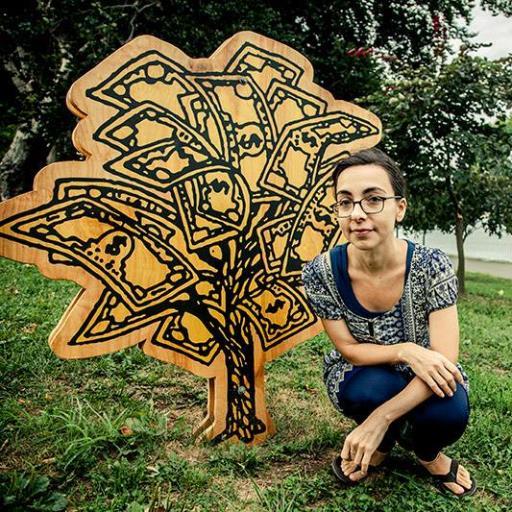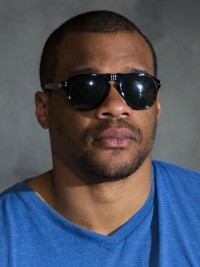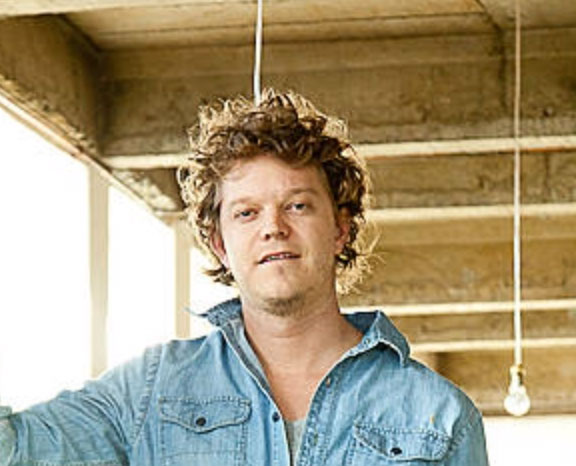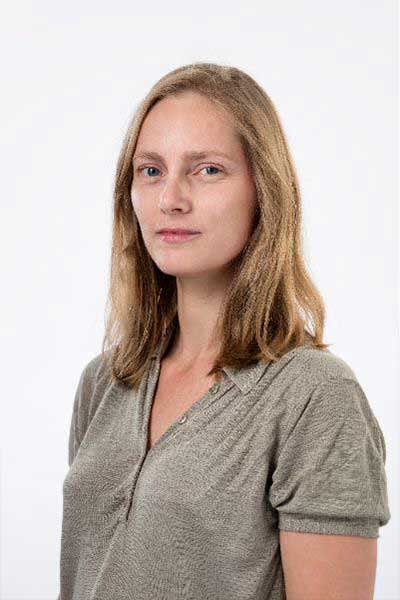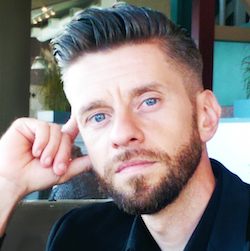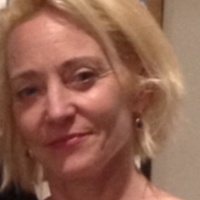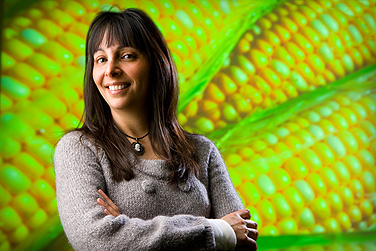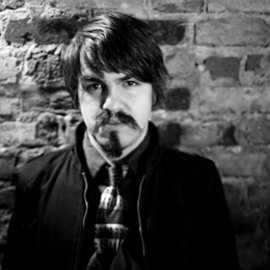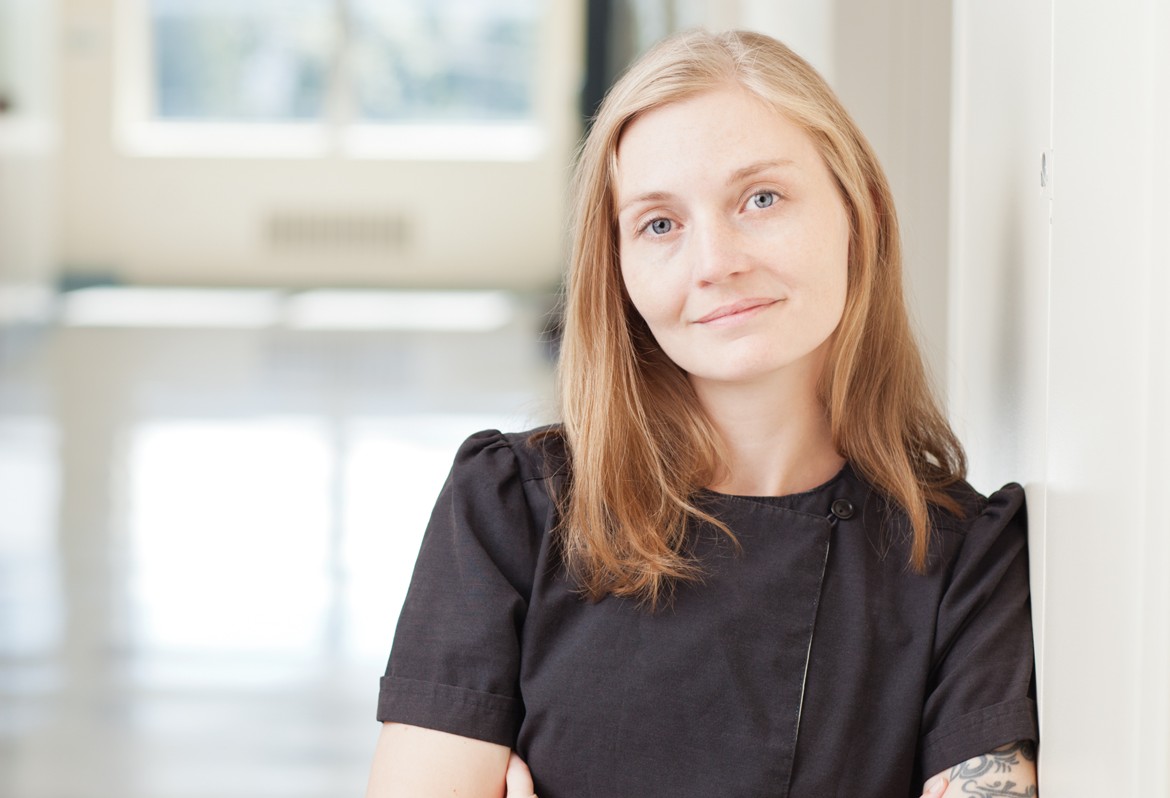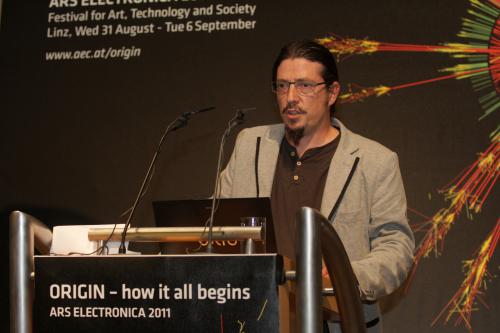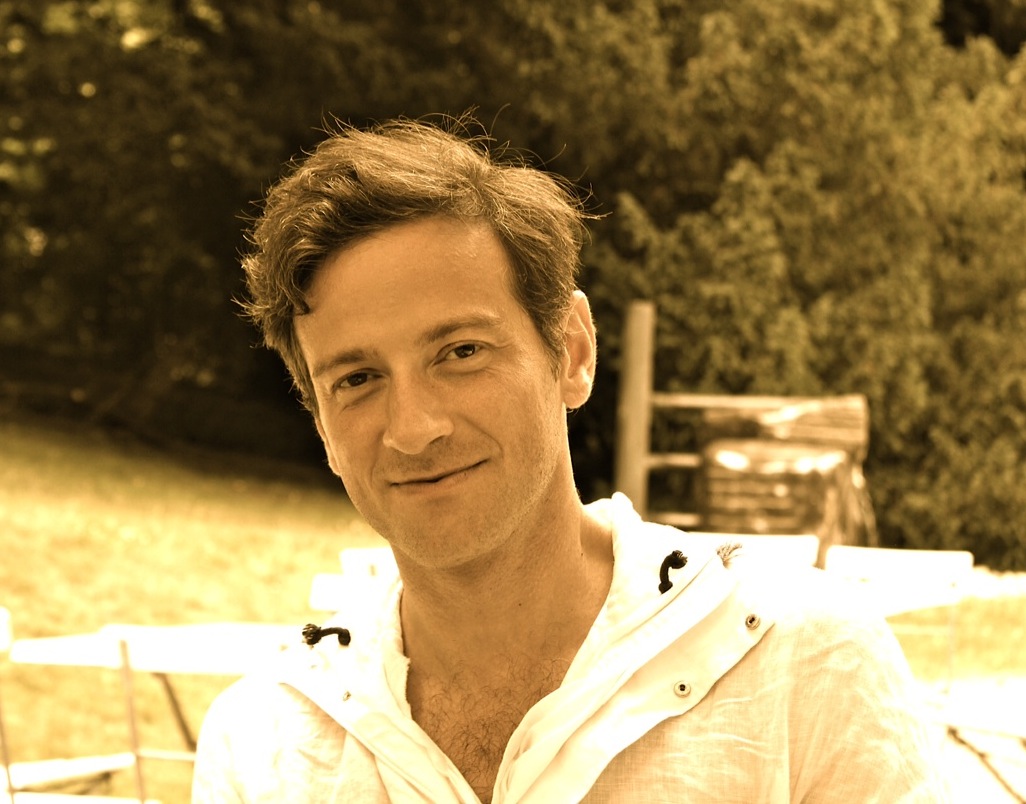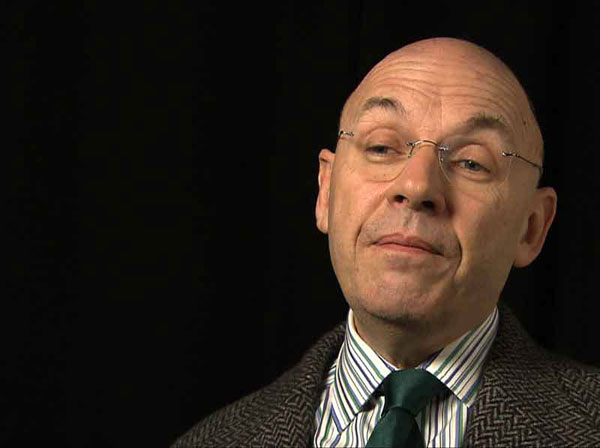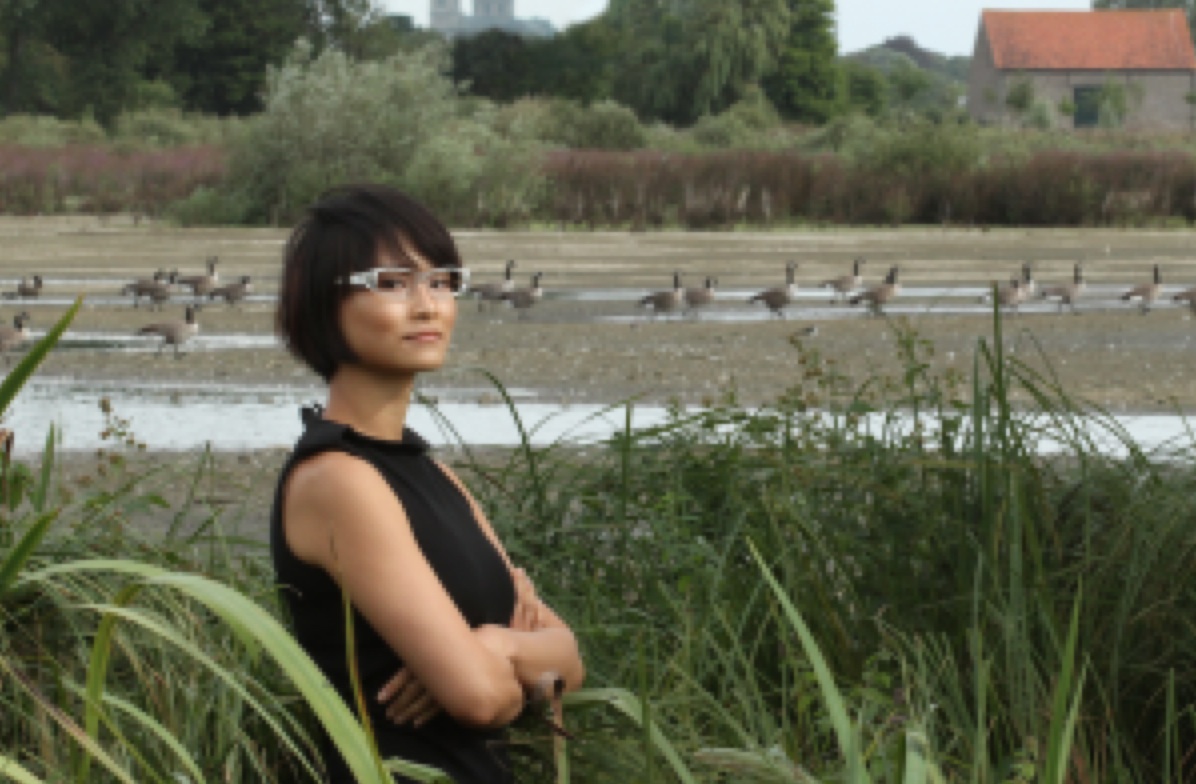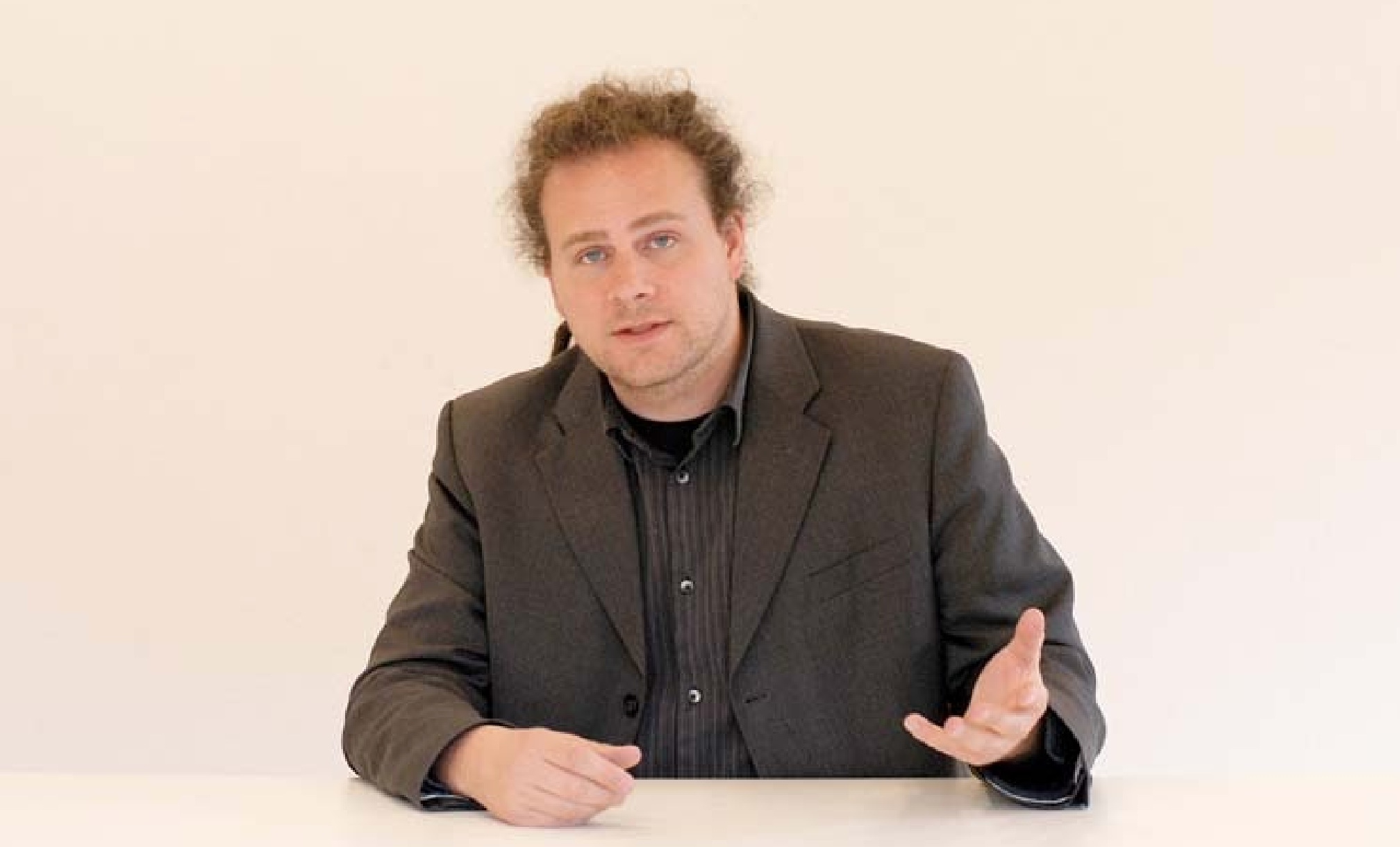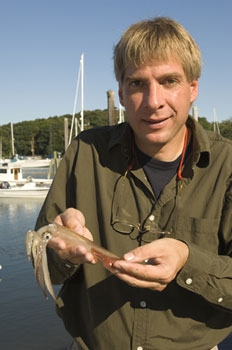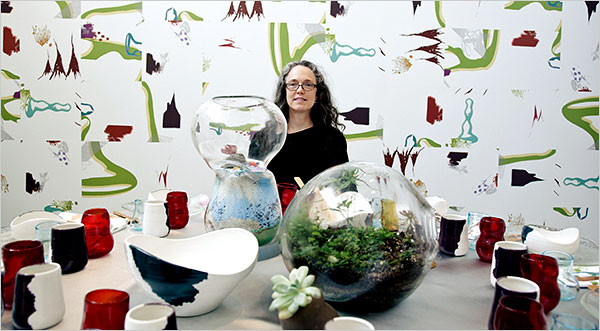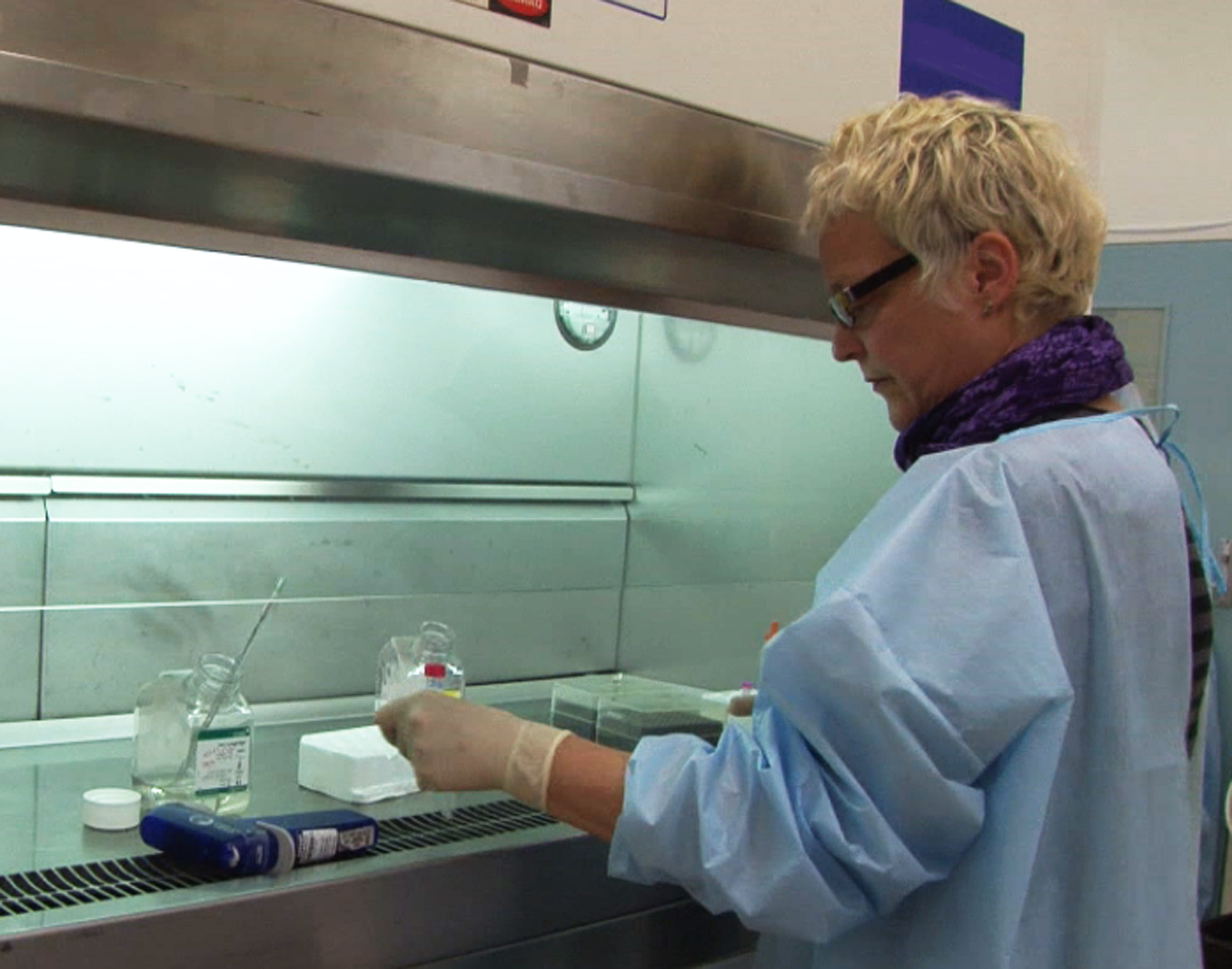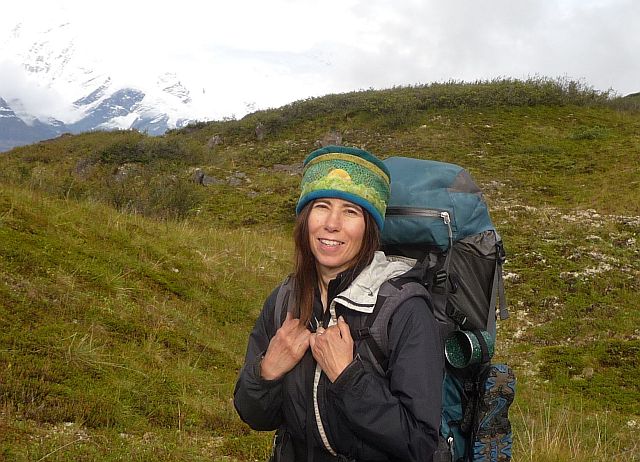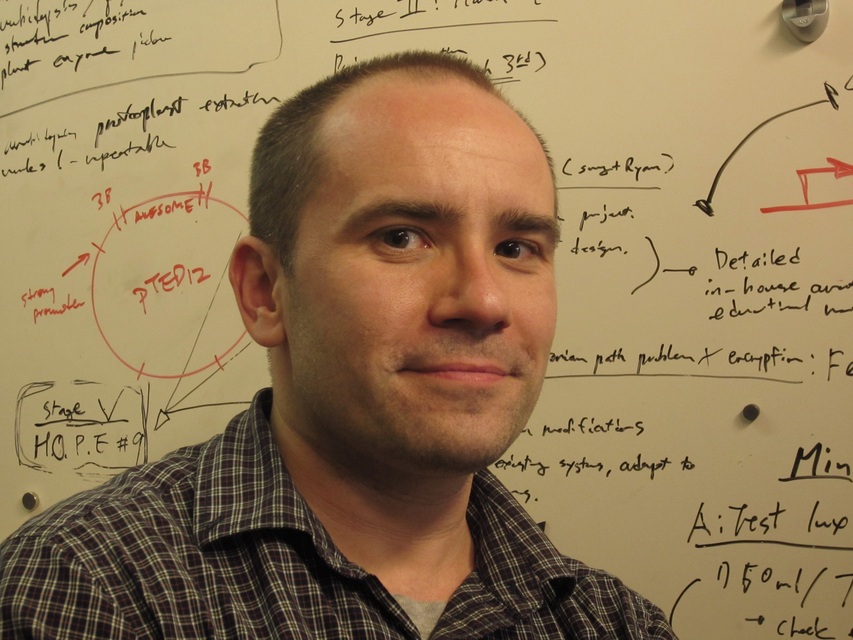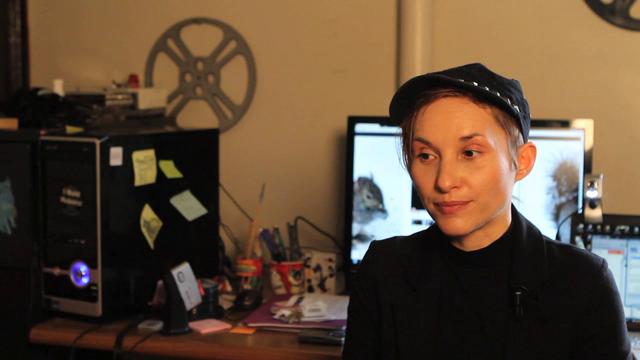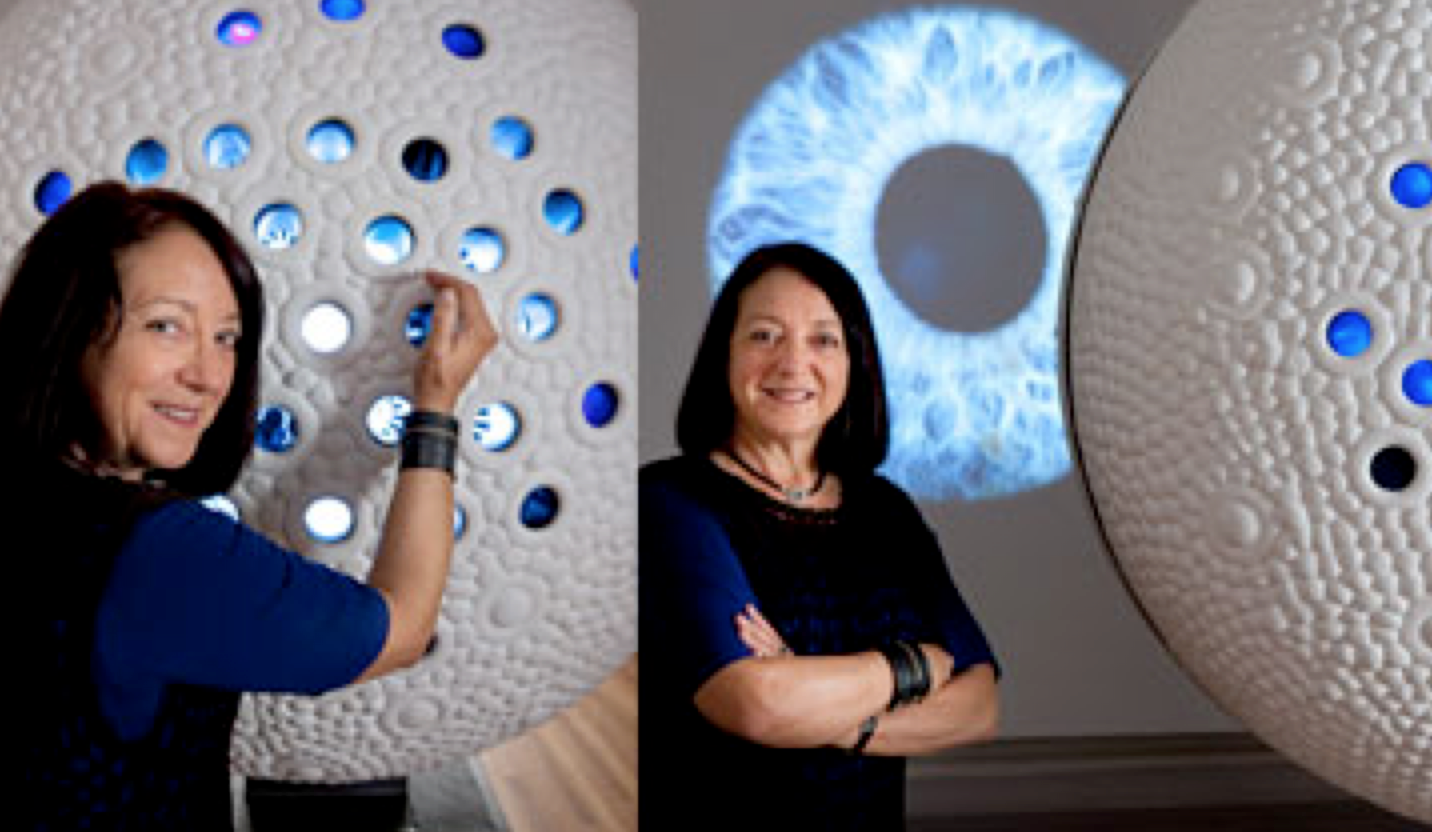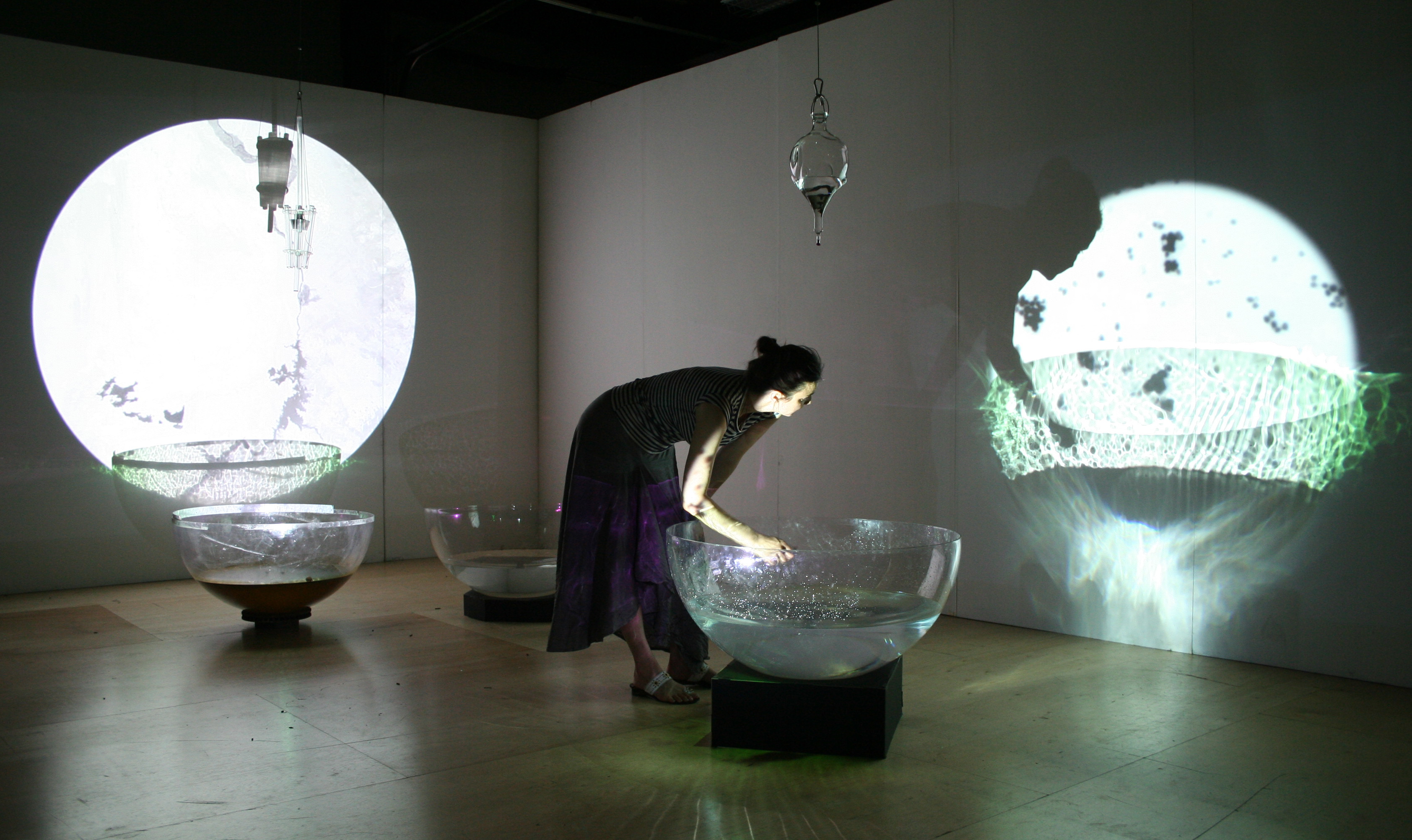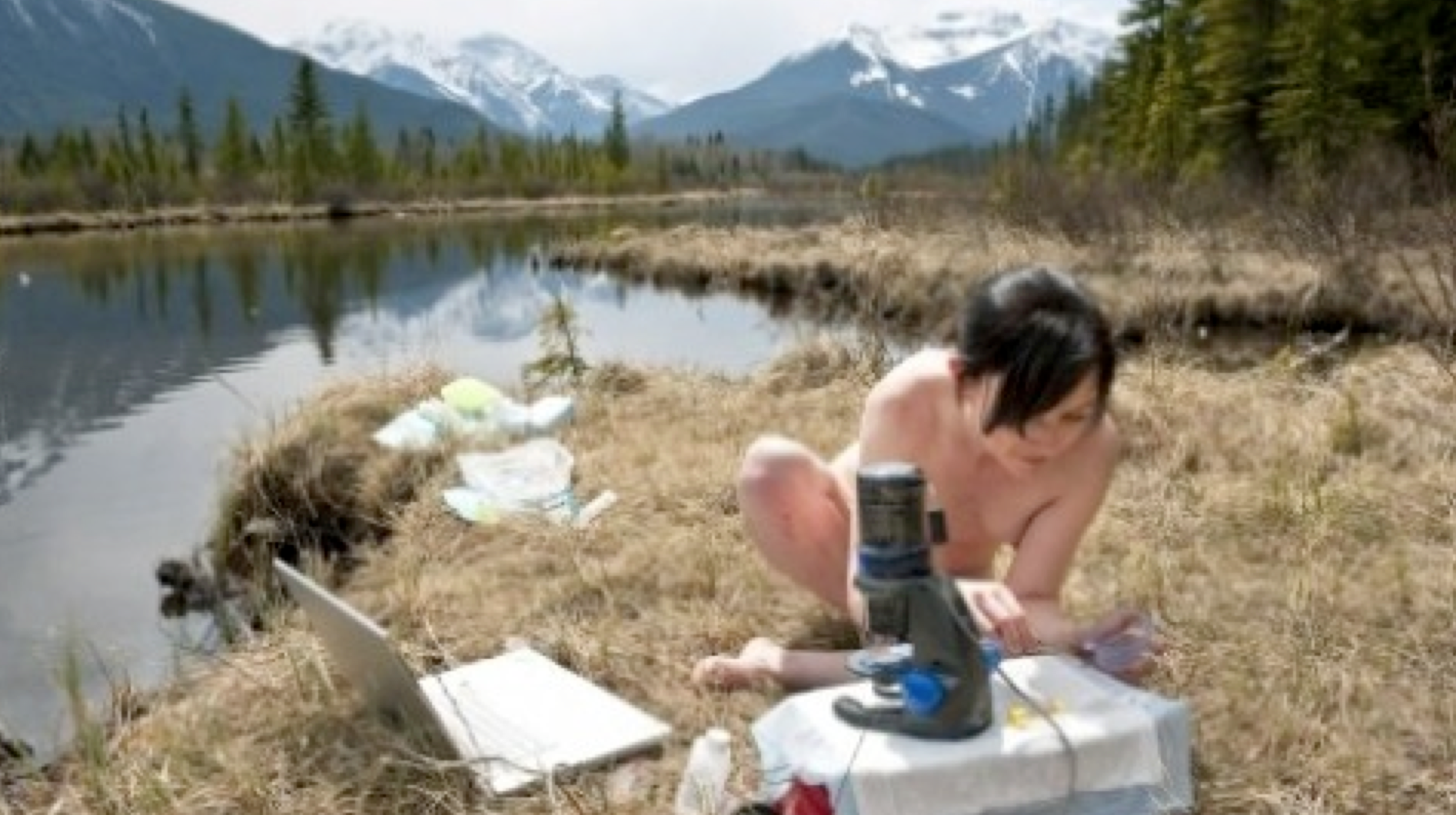George Boorujy is an artist exploring our relationship to the environment, especially our interaction with and perception of wildlife. He has exhibited widely nationally and internationally and is represented by P.P.O.W. gallery in New York. He has had solo shows at P.P.O.W. gallery, the Baker Museum in Naples, Florida, and the Newhouse Center for Contemporary Art. He is a member of the fine arts faculty at the School of Visual Arts. He has created work for the Wildlife Conservation Society, the New York Parks Department, the Audubon Mural Project, the Labrea Tar Pits, and for over a decade illustrated the Birdwatch column for the Guardian UK. A recipient of a NYFA grant in painting and a fellowship at the Smack Mellon residency, George Boorujy is a graduate of the University of Miami and the School of Visual Arts.
Archives: Guests
Anne Percoco
Anne Percoco is a Jersey City based artist who studies the interface between nature and culture, re-contextualizing overlooked places, plants, and materials. For the past 10 years she has produced public artworks, exhibitions, web-based projects, and publications. Percoco earned her BA from Drew University and her MFA from Rutgers Mason Gross School of the Arts. She was a fellow at the Asian Cultural Council and AIR Gallery, and a participant of the Bronx AIM program. Her work has been shown nationally and internationally, including at the Queens Museum, the Anchorage Museum, and the US Botanical Garden.
Noel W. Anderson
Noel W. Anderson is joining NYU’s Art and Art Professions Department as a Clinical Assistant Professor in Printmaking. Anderson holds three degrees: a Bachelor of Fine Arts from Ohio Wesleyan University, a Master of Fine Arts from Indiana University in Printmaking, and a Master of Fine Arts from Yale University in Sculpture.
Clinical Assistant Professor Noel W. Anderson utilizes print-media and arts-based-research to explore and teach philosophical inquiry methodologies. Such methodologies include but are not limited to: semiological analysis, compositional analysis, discourse analysis, deconstructive analysis, and epistemological analysis. Through a range of visual research methods – printmaking, painting, performance, and lectures – Anderson primarily focuses on the function and mediation of socially constructed images on identity formation. Looking at an image’s materiality and visuality, Anderson questions the pragmatic epistemologies of identities as formed through images. Noel Anderson was recently included in the Studio Museum of Harlem’s exhibition Speaking of People: Ebony, Jet, and Contemporary Art, which included an internationally published book, as well as multiple national and international reviews. Represented by Tilton Gallery in NYC, Anderson exhibits his research both nationally and internationally through such venues as Art Basel Miami and the Armory Show.
Anderson has held appointments as a Visiting Lecturer at Vanderbilt University, and recently as a tenure-track Assistant Professor at the University of Cincinnati. Noel Anderson was also a recent Visiting Artist and Lecturer at the Ecole Nationale Superieure des Arts Decoratifs (ENSAD) in Paris, France.
Frank Gillette
Gillette was born in 1941. He studied painting at the Pratt Institute in New York. Gillette is the recipient of numerous awards, including fellowships from the Rockefeller Foundation and the Guggenheim Foundation, and grants from the New York State Council on the Arts and the National Endowment for the Arts. He was artist-in-residence at the American Academy in Rome in 1984-85. Gillette is the author of numerous published works, including Between Paradigms (1973) and Of Another Nature (1988). His videotapes have been seen in solo exhibitions at the Everson Museum of Art, Syracuse; Contemporary Arts Museum, Houston; The Corcoran Gallery of Art, Washington D.C.; Castello di Rivoli, Turin, Italy; Leo Castelli Gallery, New York; Long Beach Museum of Art, California; The Institute of Contemporary Art, Boston; and the Whitney Museum of American Art, New York. In addition, Gillette’s work has been seen in numerous group shows, at festivals and institutions including Kunsthalle, Cologne; Documenta 6, Kassel, Germany; Venice Biennale; The Museum of Modern Art, New York; Carnegie Museum, Pittsburgh; San Francisco Museum of Modern Art; and Neuer Berliner Kunstverein, Berlin. He lives in New York.
Sabine Flach
Sabine Flach is Professor of Modern and Contemporary Art at the University of Graz where she is also Chair of the Art History Institute. She studied art history, theory of literature, philosophy and humanities in Marburg, Perugia, Kassel and Berlin. She was Department head, Zentrum für Literatur- und Kulturforschung, Berlin Publications Include: Emotionaler Habitus: Verkörperte Sinnlichkeit zwischen Subjektivität und Umweltrelation; Wissenskünste; Habitus in Habitat I: Emotion and Motion; Habitus in Habitat II: Other Sides of Cognition; Habitus in Habitat III: Synaesthesia and Kinaesthetics; Körper-Szenarien. Zum Verhältnis von Körper und Bild in Videoinstallationen
Jonathan Cane
Jonathan Cane is a Research Associate in the University of Johannesburg’s Research Centre, Visual Identities in Art and Design. He is also a Lecturer in Critical Studies and Visual Communication at Vega School of Brand Communication and is currently completing his Master’s degree in History of Art at The University of the Witwatersrand. He is an active practitioner, working in mediums ranging from furniture to photography. His research investigates the inscription of white heterosexuality on the South African landscape. He is also the founder of the interdisciplinary design studio Greenoil Guild, and chef/patron of Quilter and Workman, an experimental food design space.
Melodie Yashar
Melodie Yashar is an architect and designer committed to investigating the relationship of material fabrication, building technology, and interaction design. Melodie received a bachelors in Industrial Design from Art Center College of Design, a M.Arch degree from Columbia University GSAPP and is currently pursuing a Masters in Human-Computer Interaction at CMU. Melodie is co-founder and member of SEArch+ (Space Exploration Architecture), a group which famously won NASA’s Phase I 3D-Printed Habitat Competition, and has since been collaborating with a group of researchers at NASA Langley to realize a sub-scale demo for a future Martian ice habitat.
EPA (Environmental Performance Agency)
The Environmental Performance Agency was founded in the winter of 2017, partly in response to the presidential election and the ongoing dismantling of the US Environmental Protection Agency by artists Catherine Grau, Ellie Irons, Andrea Haenggi and Christopher Kennedy.
During the 2017 growing season, the EPA headquarters was housed at 1067 PacificPeople in Crown Heights, Brooklyn. 1067 PacificPeople was a five-year social-ecological movement-based art project by artist and choreographer Andrea Haenggi in collaboration with writer Robert Neuwirth. During that time, the EPA used 1067 Pacific Street as a hub for site-specific movement workshops, biocultural experiments, field work, and interdisciplinary art projects that explore new ways of thinking about NYC’s urban ecologies, plant-human relationships, and to advocate for the agency of all living performers co-creating our environment, native or migrant.
The EPA is now a nomadic collective that responds site-specifically to urban ecologies around the region.
Lynne van Rhijn
As Curator Modern and Contemporary Art at the RKD – Netherlands Institute for Art History Lynne van Rhijn works on documentation of Dutch art since the 1960s in its international context.
The RKD is the central resource for the study of Dutch and Flemish art. As an outward-looking academic documentation and knowledge institute, it works in close collaboration with others to reach its audience all over the world. Located in The Hague (The Netherlands), it manages a unique collection of archival, documentation and library material relating to Western art from the late Middle Ages to the present. Parts of the collection are also accessible through online databases.
Lynne van Rhijn has also written about contemporary art / edited for several art magazines. Her review ´Why I started polishing my shoes´, about Nishiko, Nasan Tur and Chris Burden in Walden Affairs, won the 2010 Prize for Young Art Criticism. Van Rhijn studied Art History and has an MA in Museum Curating. She curated for the Centraal Museum, Nest (‘Out of Control’ with Roman Opalka, Walead Beshty, Roger Hiorns, Marijn van Kreij and Hedwig Houben ) and the Rijksmuseum Twenthe (‘herman de vries / to be / verzamelingen’).
Giovanni Aloi
BA, 1997 Fine Art—Theory and Practice, Milan—S. Marta Fine Art College; PgD, 2003 Art History, Goldsmiths University of London; MA, 2004 Visual Cultures, Goldsmiths University of London; PGCE, 2008 Institute of Education, London; Ph.D., 2014 Goldsmiths University of London. Books: Botanical Speculations: Plants and Contemporary Art (Cambridge: Cambridge Scholars: 2019); Art & Animals (IBTauris: 2011); Antennae 10: A Decade of Art and the Non-Human(Antennaeproject/Forlaget248: 2017); Speculative Taxidermy: New Animals Surfaces and Art in the Anthropocene (Columbia University Press: 2018); Why Look at Plants?(Brill: 2018); Animal: An Exploration of the Zoological World (Phaidon: 2018). Publications: Editor in Chief of Antennae: The Journal of Nature in Visual Culture(2006–today); Co-editor of University of Minnesota Press series Art After Nature (2018–today); FlashArt; ArtVoices; Whitehot Magazine; The Seen. Awards: Literary Lions, SSHRC; SAIC Faculty Enrichment Grant, 2016.
Sam Van Aken
Born in Reading, Pennsylvania, Sam Van Aken received his undergraduate education in communication theory and art. Immediately following his studies he lived and worked in Poland under the auspices of the Andy Warhol Foundation and the United States Information Agency. Van Aken received his MFA from the University of North Carolina at Chapel Hill in 2001. As his work has continued to reach beyond traditional gallery and museum settings to take place in public/lived spaces his projects have been sited and staged throughout the United States and Europe, receiving numerous honors including a Joan Mitchell Award, International Association of Art Critics Award, and a 2009 Creative Capital grant. He is currently Graduate Program Coordinator for the School of Art at Syracuse University.
Thyrza Nichols Goodeve
Goodeve was born in Middlebury, Connecticut, where she lived until her family moved to Windham, Vermont. Her brother is actor Grant Goodeve, and she is a great-great-granddaughter of the Vermont politician and Union Army Colonel William T. Nichols. She attended the Westover School in Middlebury, Connecticut and Northfield Mount Hermon School (NMH) in Massachusetts. In 1975, through NMH, she attended the American School of Tangier where she met Paul Bowles and Mohammed Mrabet, key influences on her career as a writer.[1] She received a B.A. from Sarah Lawrence College (creative writing, film, philosophy), an M.A. from New York University (cinema studies), and a Ph.D. from the University of California, Santa Cruz under Donna Haraway and James Clifford.[1] She lives in Brooklyn Heights, New York.
Francois-Joseph Lapointe
François-Joseph Lapointe is a biologist/bioartist from Montreal. As part of his scientific research, he is interested in molecular evolution, metagenomics, and population genetics.
As an artist, he is interested in the application of biological concepts and the use of living media in performative experiments. His most recent project is to sequence his microbiome (and that of his wife) to generate metagenomic self-portraits (or “microbiome selfies”).
Stefani Bardin
Stefani Bardin explores the influences of corporate culture and industrial food production on our food system and the environment. She works with neuroscientists, biologists and gastroenterologists to ground her research in the scientific world. These investigations take the form of single and multi-channel videos, immersive and interactive installations as well as tools for measuring and/or mediating these influences.
Several of her current projects include M2A: The Fantastic Voyage, an ongoing collaboration with a Gastroenterologist at Harvard University using wireless gastroenterology devices to look at the impact of processed foods versus whole and less processed foods on the body; M(y)crobes – a project with a neuroscientist and digital artist that explores human cohabitation with the microbes that live within, on and around us using wearable biosensors to measure the effects of one’s own biotic micro-ecosystem in concert with the macro-ecosystem of the environment; and La Casita Verde, a 2000 square foot lot empty lot in South Williamsburg awarded to her and her collaborator Brooke Singer by the NYC Parks Department to develop an R + D lab for art, science and technology projects that address issues within the Food Soil Web. They are partnered with members of the community to also address issues of urban design, urban agriculture and urban intervention and just received a $25,000 grant from the Greenpoint Community Environmental Fund to develop curriculum in the space.
Her work has been written about in Wired Magazine, Scientific American, Art21, Forbes, New York Magazine, The Huffington Post and The Village Voice. She is currently working on an article about the role of science in her work for The Arts, Science and Technology journal Leonardo.
Kirby Gookin
Kirby Gookin is a writer, curator, public artist, and professor of critical studies in the Department of Art and Art Professions at NYU, and the Department of Art History at The School of Visual Arts, where he teaches, among other courses, Avant-Gardening: Art, Food and Agriculture. He has contributed to Artforum (as staff critic), Artscribe, Arts Magazine, Interview, and Parkett; and has written essays for several gallery and museum publications including Creative Time: 33 Years.
James Walsh
James Walsh has been making art in a variety of media since 1986 and has shown throughout the United States, and in Turkey, Italy, England and Sweden. He is the author of two books, Foundations (1997) and Solvitur Ambulando (2003), and numerous unique and limited-edition artist’s books. Awards and residencies include a Fulbright Fellowship to Turkey and residencies at The MacDowell Colony, The Edward Albee Foundation, Art Omi, and Center for Book Arts. His work comes out of a love for natural history, particularly the history of natural history. For the past several years, he has been learning botany by identifying, pressing and mounting plants found in his neighborhood, which has resulted in two ongoing projects: A Flora of the Gowanus and the Index to Arctic Plants of New York City. Walsh studied literature at Hobart College, Geneva, NY, and at Oxford University, England.
Heather Dewey-Hagborg
Heather Dewey-Hagborg is a Chicago-based transdisciplinary artist and educator who is interested in art as research and critical practice.
She has shown work internationally at events and venues including the World Economic Forum, Shenzhen Urbanism and Architecture Bienniale, the New Museum, and PS1 MOMA. Her work has been widely discussed in the media, from the New York Times and the BBC to TED and Wired.
She is an Assistant Professor of Art and Technology Studies at the School of the Art Institute of Chicago and a 2016 Creative Capital award grantee in the area of Emerging Fields.
Dejan Lukic
Received a PhD in anthropology from Columbia University. Wrote a book on terrorism and aesthetics. Currently writing manuscripts on charisma and images, ideology and the sea, ocularity and power, vitalism and culinary arts. Taught at Columbia University, Rutgers University, The New School, Reed College, and presently the School of Visual Arts where he trains students in the MFA Art Writing program. Co-directs Vitalist Cuisine.
Oron Catts
Oron Catts is the director of SymbioticA, the Centre of Excellence in Biological Arts, within the School of Anatomy and Human Biology, The University of Western Australia.
Oron Catts is an artist, researcher and curator whose pioneering work with the Tissue Culture and Art Project which he established in 1996 is considered a leading biological art project. In 2000 he co-founded SymbioticA, an artistic research centre housed within the School of Anatomy, Physiology and Human Biology, The University of Western Australia. Under Catts’ leadership SymbioticA has gone on to win the Prix Ars Electronica Golden Nica in Hybrid Art (2007) the WA Premier Science Award (2008) and became a Centre for Excellence in 2008. In 2009 Catts was recognised by Thames & Hudson’s “60 Innovators Shaping our Creative Future” book in the category “Beyond Design”, and by Icon Magazine (UK) as one of the top 20 Designers, “making the future and transforming the way we work”.
Catts interest is Life; more specifically the shifting relations and perceptions of life in the light of new knowledge and it applications. Often working in collaboration with other artists (mainly Dr. Ionat Zurr) and scientists, Catts have developed a body of work that speak volumes about the need for new cultural articulation of evolving concepts of life. Catts was a Research Fellow in Harvard Medical School, a visiting Scholar at the Department of Art and Art History, Stanford University, and a Visiting Professor of Design Interaction, Royal College of Arts, London. Catts’ ideas and projects reach beyond the confines of art; his work is often cited as inspiration to diverse areas such as new materials, textiles, design, architecture, ethics, fiction, and food.
Giovanni Frazzetto
Grahame Weinbren
Grahame Weinbren, recognized as a pioneer of interactive cinema, has made films and installations for over 30 years. His high definition short films “Letters” were exhibited in the 2008 Berlin Film Festival and the 2010 Zero1 San Jose Biennial. Weinbren has published and lectured for three decades on cinema, interactivity, and new media. He is the senior editor of the Millennium Film Journal and teaches in the graduate faculty of the School of Visual Arts in New York.
Lisa Ma
Lisa Ma socialises activism. Combining fringe communities, ethnographic research and speculative design, her unusual ‘platforms of engagement’ creates social events that are perceived as activism but function as services.
Fallen Fruit
Using photography, video, performance, and installation, Fallen Fruit’s work focuses on urban space, neighborhood, located citizenship and community in relation to fruit.
Mitchell Joachim
Mitchell Joachim is acknowledged as an innovator in ecological design, architecture, and urban design. He is an Associate Professor in Practice at NYU and EGS in Switzerland. Mitchell Joachim’s specific professional interest has been adapting principles of physical and social ecology to architecture, city design, transport, and environmental planning. He earned a Ph.D. at Massachusetts Institute of Technology, MAUD Harvard University, M.Arch. Columbia University.
Ingeborg Reichle
Dr. Ingeborg Reichle, is a cultural theorist writing on, contemporary art, new technologies and new media, with a focus on, biotechnology and artificial life. She is Lecturer of Contemporary Art and „Bildwissenschaft“ at the Hermann von Helmholtz -Zentrum für Kulturtechnik, Humboldt-University Berlin.
Joseph DeGiorgis
Joe graduated with a bachelors’ degree in Oceanography and Marine Ecology from the Florida Institute of Technology and worked as a SCUBA diver for the Marine Biological Laboratory (MBL) in Woods Hole, Massachusetts. He spent time at the Harbor Branch Oceanographic Institute and at Harvard Medical School before obtaining a PhD in Neuroscience from Brown University. He was a Postdoctoral Fellow at the National Institutes of Health and is now a Professor of Biology at Providence College and Adjunct Faculty in the MBL Cellular Dynamics Program. Throughout his academic career Joe has been interested in imaging using a wide variety of techniques from underwater photography to light and electron microscopy. Joe has taken his camera and dive gear around the world and has photographed the shipwrecks of Truk Lagoon, the sharks of Palau, the coral walls of Cozumel, and the coral reefs of Thailand, among others. His research focuses on the function of Alzheimer’s proteins and uses the squid giant axon as a model system. His work as been published in magazine articles and on the covers of scientific journals including; Molecular Biology of the Cell and Traffic. Currently, Joe is preparing for a year at sea capturing images of the organisms along Darwin’s Voyage through microscopes, telescopes, and the macro lens.
Sebastian Cocioba
Plant Biotechnology researcher with a focus on the production of commercially and industrially valuable plant species. Owner of New York Botanics, LLC, a plant biotech R&D laboratory with a specialization in orchid micropropagation.
Paula Hayes
Paula Hayes is an American visual artist and designer who works with sculpture, drawing, installation art, botany, and landscape design. Hayes has lived and worked in New York City for over two decades and is known for her terrariums and other living artworks, as well as her large-scale public and private landscapes. A major theme in Hayes’ work is the connection of people to the natural environment, and much of her work is concerned with the care that is required to grow and maintain large- and small-scale ecosystems.
Kathy High
Kathy High is an interdisciplinary artist from New York currently working with living systems, animals, and biology and art. She produces videos, sculptures and installations around issues of gender and technology, pursues queer and feminist inquiries into areas of bio-science, science fiction, and animal studies. Her works have been shown in festivals, galleries and museums, including the Guggenheim Museum, Museum of Modern Art, Lincoln Center, Exit Art (NYC), the Science Gallery, (Dublin), NGBK, (Berlin), MASS MoCA (North Adams), Videotage Art Space, Para-Site Gallery (Hong Kong), among others. She has received awards for her works including fellowships from the John Simon Guggenheim Memorial Foundation (2010), the Rockefeller Foundation, and the National Endowment for the Arts.
Ellie Irons
Ellie Irons is an interdisciplinary artist exploring the interplay of humanity and ecology through drawings, environmental sculpture, and electronic media. Born in rural Northern California, she went to college in Los Angeles to study art and environmental science. Ellie relocated to New York City in 2005, and completed an MFA at Hunter College in fall 2009.
Ellen D. Jorgensen
Ellen is passionate about increasing science literacy in both student and adult populations, particularly in the areas of molecular and synthetic biology. She teaches courses and workshops in molecular and synthetic biology for the general public at Genspace, and is involved in numerous collaborations with educational outreach organizations aimed at developing and implementing better science education at the middle school, high school, and undergraduate level. Dr. Jorgensen received her Ph.D. in Cell and Molecular Biology from the Sackler Institute at New York University School of Medicine in 1987, and went on to continue her research in protein structure/function at SUNY Downstate in Brooklyn. She is presently an adjunct faculty member at New York Medical College. Her latest project is to DNA barcode the plants of the Alaskan tundra.
Oliver Medvedik
Open source synthetic biologist and co-founder of Genspace, a first of its kind community biolab, Oliver Medvedik earned his Ph.D. at Harvard Medical School, in the Biomedical and Biological Sciences program. As part of his doctoral work he has used single-celled budding yeast as a model system to map the genetic pathways that underlie the processes of aging in more complex organisms, such as humans. Prior to arriving in Boston for his doctoral studies, he has lived most of his life in New York City. He obtained his bachelor’s degree in biology from Hunter College, City University of New York. Since graduating from Harvard, he has worked as a biotechnology consultant, taught molecular biology to numerous undergraduates at Harvard University and mentored two of Harvard’s teams for the international genetically engineered machines competition (IGEM) held annually at M.I.T.
Arthur I. Miller
Arthur I. Miller is Emeritus Professor of History and Philosophy of Science at University College London.[1] He took a PhD in physics at the Massachusetts Institute of Technology. From 1991 to 2005 he was Professor of History and Philosophy of Science at University College London, where he founded the Department of Science & Technology Studies.
Marta de Menezes
Marta de Menezes is a Portuguese artist with a degree in Fine Arts by the University in Lisbon, a MSt in History of Art and Visual Culture by the University of Oxford, and a PhD candidate at the University of Leiden. Her work has been presented internationally in exhibitions, articles and lectures. She is currently the artistic director of Ectopia, an experimental art laboratory within a biological research institute – the Instituto Gulbenkian de Ciência – in Lisbon, and Director of Cultivamos Cultura in the South of Portugal.
William Myers
William Myers teaches, writes and gives public lectures about the history of architecture and design. He is currently based in Amsterdam and is curating an exhibition at The New Institue in Rotterdam on Biodesign. William has worked for the Solomon R. Guggenheim Museum, The Museum of Modern Art (MoMA), the Smithsonian Cooper-Hewitt National Design Museum, Hunter College and Genspace, the first community biotech laboratory in the United States. His work has appeared in Domus Magazine, Metropolis Magazine, The Architect’s Newspaper, New York Magazine, Next American City Magazine. William is a graduate of the MFA program in Design Criticism at the School of Visual Arts in New York.
Boryana Rossa
Boryana Rossa is an interdisciplinary artist and curator who works in the fields of electronic arts, film, video, performance and photography. Most of Rossa’s performances and other works have been shown internationally at venues such as steirischer herbst, Graz; National Gallery of Fine Arts, Sofia; 1st Balkan Biennale, Thesaloniki; Kunstwerke and Akademie der Kunste, Berlin; The 1st and 2nd Moscow Biennial For Contemporary Art; Elizabeth A. Sackler Center for Feminist Art at the Brooklyn Museum, NY; Museum of Contemporary Art (MUMOK) Vienna; Zacheta Gallery, Warsaw; Sofia City Art Gallery; Institute of Contemporary Art, Sofia; Exit Art, NY, Sofia Arsenal – Museum of Contemporary Art (SAMCA), Sofia.
Jill Scott
Prof. Dr. Jill Scott is Professor for Art and Science in the Institute Cultural Studies in the Arts, at the Zurich University of the Arts (ZhdK) in Zürich and Founder of the Artists-in-Labs Program, which places artists from all disciplines into physics, computer, engineering and life science labs to learn about scientific research and make creative interpretations. She is also Vice Director of the Z-Node PHD program on art and science at the University of Plymouth, UK. Her recent publications include: Neuromedia: Art and Science Research together with Esther Stöckli, The Transdiscourse book series: Volume 1: Mediated Environments, 2011, Artists-in-labs: Networking in the Margins, 2011 and Artists-in-labs: Processes of Inquiry: 2006 Springer/Vienna/New York.
Victoria Vesna
Victoria Vesna, Ph.D., is a media artist and Professor at the UCLA Department of Design | Media Arts and Director of the Art|Sci center at the School of the Arts and California Nanosystems Institute (CNSI). She is currently a senior researcher at IMéRA – Institut Méditerranéen de Recherches Avancées in Marseille (2011-2013). Victoria has exhibited her work in over twenty solo exhibitions, more than seventy group shows, has been published in excess of twenty papers and gave 100+ invited talks in the last decade. She is the North American editor of AI & Society and in 2007 published an edited volume – Database Aesthetics: Art in the age of Information Overflow, Minnesota Press and most recently an edited volume entitled Context Providers: Conditions of Meaning in Media Arts. (co-edited with Christiane Paul and Margot Lovejoy). Intellect Press, 2011.
Jennifer Willet
Dr. Jennifer Willet is an internationally successful artist in the emerging field of BioArt. From 2000-2007 Willet and Shawn Bailey collaborated on an innovative computational, biological, artistic, project called BIOTEKNICA. At the same time, she taught in the Studio Arts Department at Concordia University, and completed her PhD in the Interdisciplinary Humanities Program at the same institution. Willet also taught “BioArt: Contemporary Art and the Life Sciences” for The Art and Genomics Centre at The University of Leiden in 2008, and now works as an Assistant Professor in the School of Visual Arts, at The University of Windsor. In 2009 she opened the first biological art lab in Canada, called INCUBATOR: Hybrid Laboratory at the Intersection of Art, Science, and Ecology at the UofW. In July 2011 she completed BioARTCAMP, a project that involved hosting 20 artists, scientists and students at The Banff Centre, where they built a portable bioart laboratory and conducted experiments in the Canadian Rocky Mountains.

